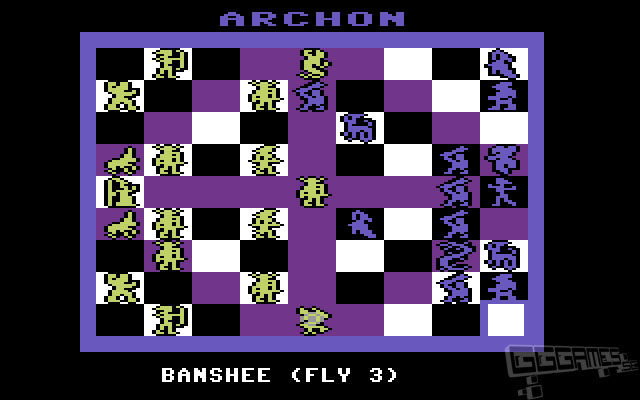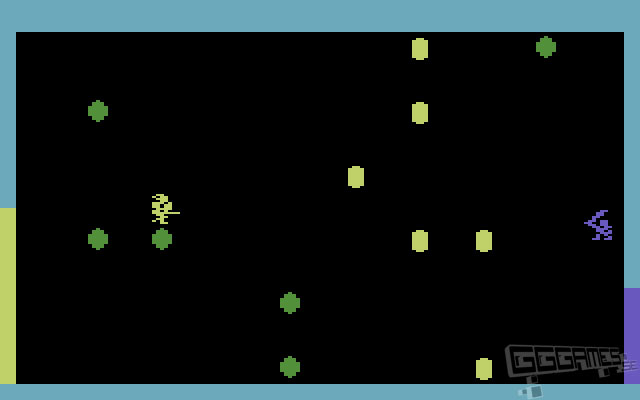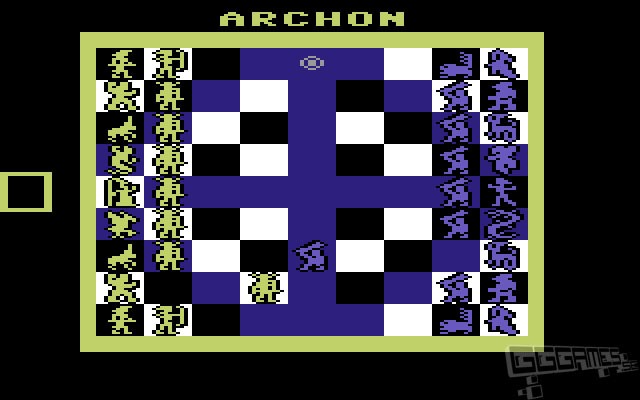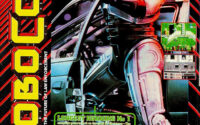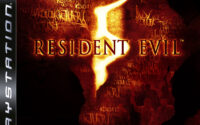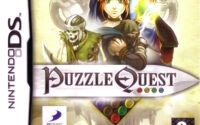Archon: The Light and The Dark Review
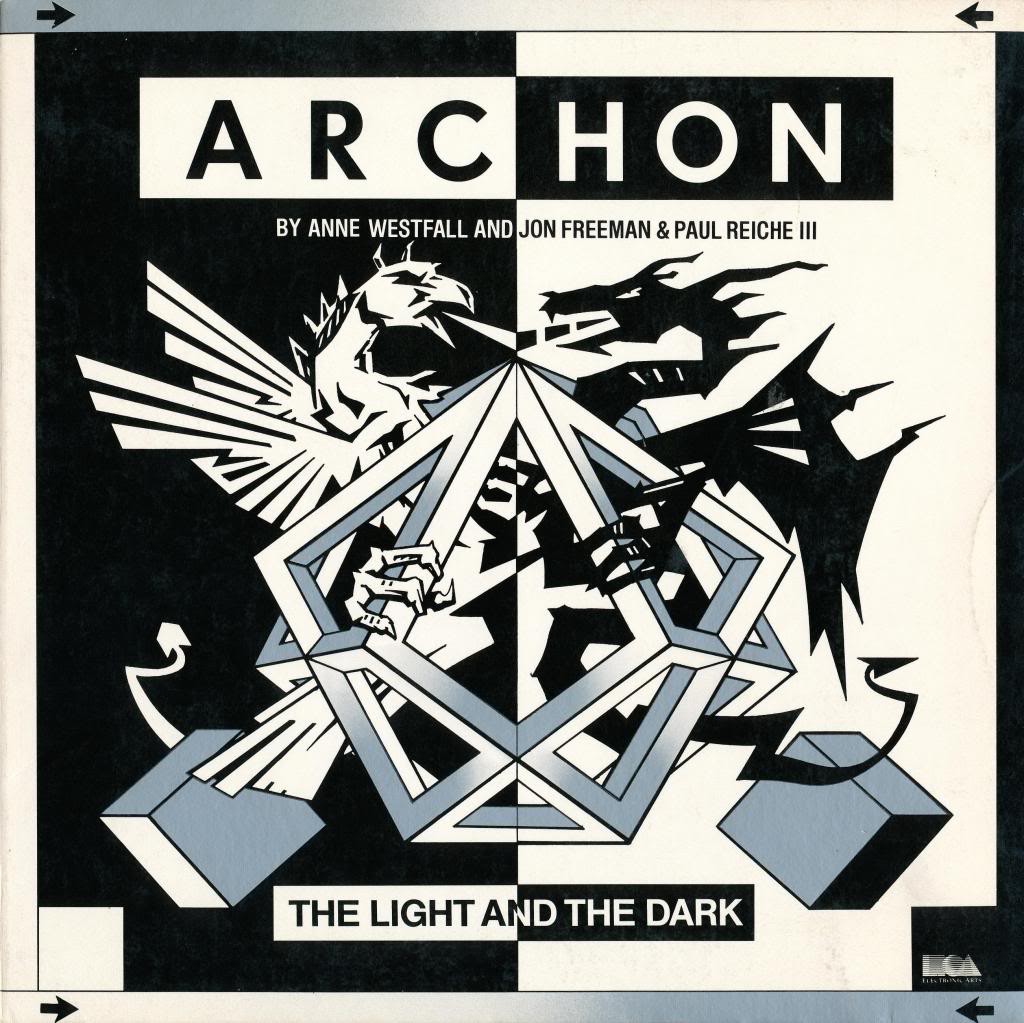
Strategic turn based board game with real time battles.
Story
Archon: The Light and the Dark depicts the eternal struggle between light and darkness. They are equal in number, balanced in strength but not identical. Their aim, however, is the same: conquest of the five Power Points or elimination of the opposing side.
The Game
Archon: The Light and the Dark is the first title in the Archon game series. It is a strategic turn based game with real time action based fights. Archon is often referred to as a chess type game as it is mainly a turn based game played on a checkerboard with various units, somewhat similar to chess. The goal of the game is to either hold the five key locations, called Power Points, on the board or to defeat all the opposing units. The board also has special fields that form a so called Luminocity Circle – these fields can change colors in favor of either the Light or the Darkness, strengthening those units respectively. As noted above the main game is played on a turn-by-turn basis. On your turn you get to move one of your units on the board. When two opposing units clash, the game switches over to an action oriented abstract battle scene between those two units. Units may have unique properties during battle, so your chance to win a battle is heavily influenced by how your unit fares against the opposing unit.
Content
The various units for the Light side are; Valkyrie, Golem, Unicorn, Djini, Wizard, Phoenix, Archer and Knight. The Darkness side has: Banshee, Troll, Basilisk, Shapeshifter, Sorceress, Dragon, Manticore and Goblin. These units all have their own properties – some can shoot projectiles and cast spells whilst others are limited to use proximity attacks or even melee weapons. You’ll also notice difference movement speeds and means of travel – flying creatures can fly over occupied spaces.
During combat each attack, be it swings with a weapon or shooting projectiles, has its own attack speed, or attack recovery time, rather. This means that after each attack you make, you must wait a while before you can attack again. The game rings a tone when your attack is ready to be used.
Each battle scene also has a seemingly random number of barriers that you can take cover behind. Thus, the battles are heavily based on your timing, reactions and reflexes.
Each unit also has its individual life pool which shows how much damage it can take before it dies. A wounded unit will heal a small amount of health each turn on the main board, and there are also healing spells that can be used for quick recovery. It’s wise to be mindful of the state of each of your units before you engage in combat.
During the move phase you can cast spells with spell casting units (each side has one such unit) instead of moving. The spells known by your caster can only be cast once per game, so you have to plan ahead wisely. The best spells can teleport units across the board, revive one fallen unit and summon elemental minions to fight by your side. With that said, it’s obvious that the spell casting units are the most valuable units in the whole game.
Archon: The Light and the Dark can be played against either a CPU controlled opponent or against another human player. You can play as either the Light- or the Darkness side.
Playing against the CPU sadly has many problems. There are bugs in the AI during the combat scenes that you can exploit to your advantage and win consistently. If you don’t exploit it however, the game is excruciatingly difficult – the AI controlled units, especially the melee units, are relentless and basically never miss with an attack – they have inhuman reflexes. Its melee units tend to rush into you and chop you up in a matter of seconds. You can try to attack them back, but most certainly you’ll miss because the opponent moves back and forth so fast, and in this case you simply can’t afford to miss. Your only option is to flee and use hit and run tactics, which feels strange considering the powers that are at play here.
Of course, this isn’t a problem when you play against another human player – you’re then on equal ground and the battles can be pretty exciting.
The exploit mentioned above is easy to perform, and more disappointingly it’s easy to discover. Thus it effectively breaks the game. You can easily lure CPU controlled enemies to get stuck in the barriers that are positioned on the battle field. Once you get it stuck, running mindlessly into the barrier, you just need to stand still and use ranged attacks on it until it dies. This can also be done with melee units but you’d need to be more careful because you then need to stand close to the enemy unit when it gets stuck.
The two sides are well balanced, but it can be argued that the Shapeshifter unit is better than the Phoenix (who is supposed to be on the same tier), but this unbalance is more than enough made up for thanks to the fact that the Valkyries are better than the Banshees. It all comes down to how you play – the best strategy is to pick the fights that are in your favor as much as possible.
Also watching the Luminocity Circle should be a main part of the strategy – when it is in favor of the Darkness, those units will receive a huge boost to their life pool and vice versa. The entire game encourages careful planning but sadly the combat scenes can easily break that strategical mind game – simply because brawn beats brains here.
Graphics
The visuals in the game are very simple, basic and easy to oversee. The units are colored either blue or yellow and the only animation in the game is the walking animation of the units. The battle scenes are plain black screens with these gem-shaped abstract barriers. This builds up an illusion that the whole conflict takes place on an energy plane rather than in the material, physical world. Where else would a conflict between light and darkness take place? Either way, the game does not provide very much eye candy nor visual feedback on occurring events – when a unit dies, for example, it simply vanishes.
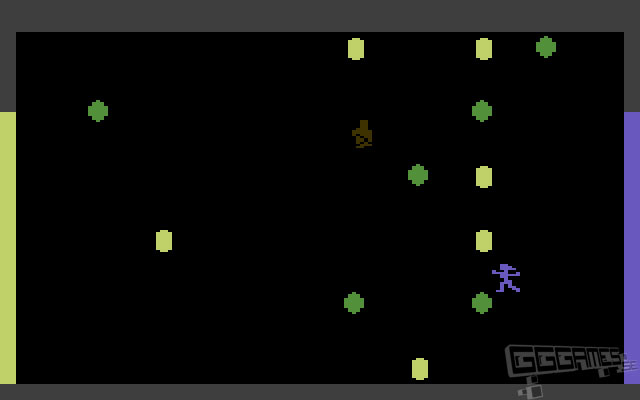 Sound
Sound
The game has a short theme song which is sets the mood for the game. One of the most impressive feats of the whole game is the fact that almost every unit has its own sound, so you can learn to recognize unit types by ear. This also helps to characterize the various units on the board.
Summary
Archon: The Light and the Dark is a very nice try in making a new and unique strategy game. Sadly it falls apart due to poor AI programming, and the fact that the game is far too biased if you play against someone who excels in the combat scenes. Because of this, the potential of the game falls a little short, even if it is a very interesting game idea as such.
Basically this game is fun and refreshing until you discover the ugly AI bugs in it. As a two player game it fares much better and can be quite enjoyable.

